You’re drowning in data; up to your eyeballs in things to do and stuff to plan.
Your business is growing - more staff, more customers - but at what cost?
You’re tired. The old mechanisms can’t cope with an influx of things to do. The old staff are sitting in the same boat, rocking from side to side, looking somewhat seasick. Everybody’s miserable, and your customers’ experiences start to suffer. You couldn’t scale your growth because your tools in place weren’t good enough. And then you found CRM, in all its organisation, automation and growth.
But how to choose a CRM system?
Often, choosing a CRM system isn’t easy. How to choose a CRM platform that meets your business needs; a CRM system with a shallow learning curve, plenty of features to get your teeth into, and exceptional customer support?
Choosing a CRM system starts here. This article outlines what a CRM is, when you need one, how to choose a CRM, and three CRM systems to choose from and get the juices flowing.
Let’s get growing!
What is CRM?
CRM stands for Customer Relationship Management.
It’s software helps run your business, specifically by organising and centralising customer data and automating different lead generation, lead nurturing, and outreach processes. It keeps all your business bits in one place, and that’s what you need when all your business bits are growing exponentially. If all goes well, CRM scales the growth of your business through accurate analytics, insights, and forecasting.
Principally, CRM collects and stores customer information such as phone numbers, email addresses, social media profiles, email and communication history, what was discussed, lead’s objections and challenges, the information you need to prepare for them, and when you need to follow up. This results in a more positive customer experience amongst other beautiful CRM benefits…
- Quicker and easier access to data for customer-facing workers
- A shared source of truth for better accountability
- Comprehensive, reliable reporting and analytics on sales and marketing processes
- Structured CRM data means fewer overlapping systems and open tabs
- GDPR, other data regulations, and audits are adhered to easily
- Personalised, segmented, manual outreach to leads and customers
- Customer context at your fingertips, all the time
Going further, many modern CRM systems can automate business processes.
Sales automation is the delegation of repetitive, mundane sales tasks to sales automation software. It saves time, helping sales reps and managers focus on more important tasks that they can’t automate - closing deals and building personal relationships. Workflow automation is built in a workflow builder.
It’s really, really cool, and it looks like this 👇
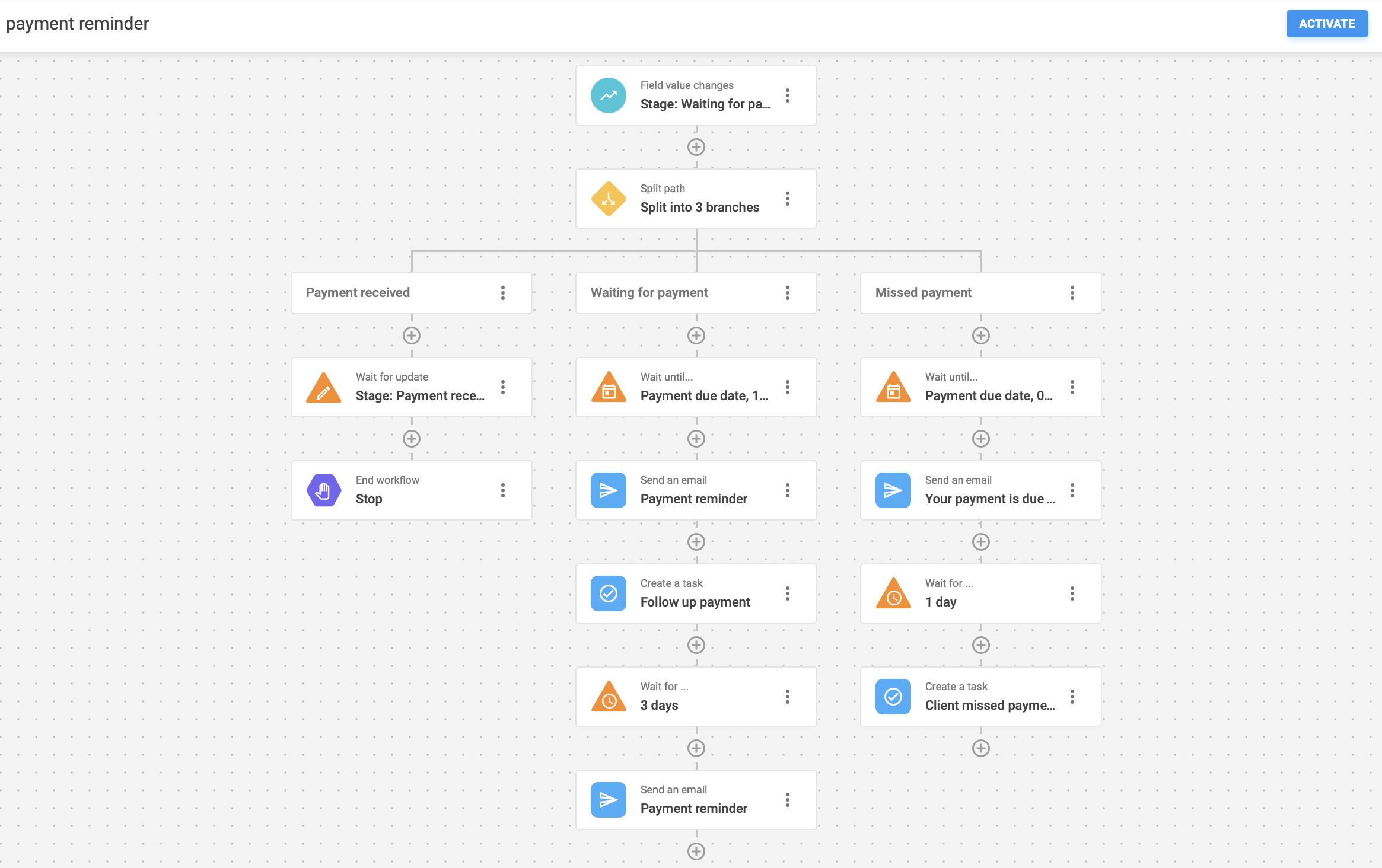
This is a sales automation workflow for payment reminders. It’s split into three branches. The first branch stops once the payment is received. The second ranch sends payment reminders at a pre-set frequency. The third branch creates a task to manually follow-up as the client misses a payment.
Overall, CRM enhances organisation and productivity.
When do you need CRM?
The obvious answer to this question is… now. I won’t bore you with the numbers, but businesses overwhelmingly vote with their wallets and choose to run their business with any CRM provider from the thousands out there. You’ll fall behind - CRM is top of the tech stack, and whole businesses are run out of the software. If you’re still not convinced, here are ten more signs you need CRM…
- Low conversion rates
- Low retention rates
- Lack of analytics; regularly making gut-decisions
- Data all over the place
- Lack of hindsight and foresight of client activity, behaviour, and needs
- Lack of visualisation of employee activity
- Slow, complicated sales and marketing outreach processes
- Ineffective communication between teams and team members
- Low morale between team members; exhaustion and fatigue
- Leads falling through the cracks of an ill-thought-out sales pipeline
Sound familiar? I’ll consider you convinced. It’s time to figure out the next steps.
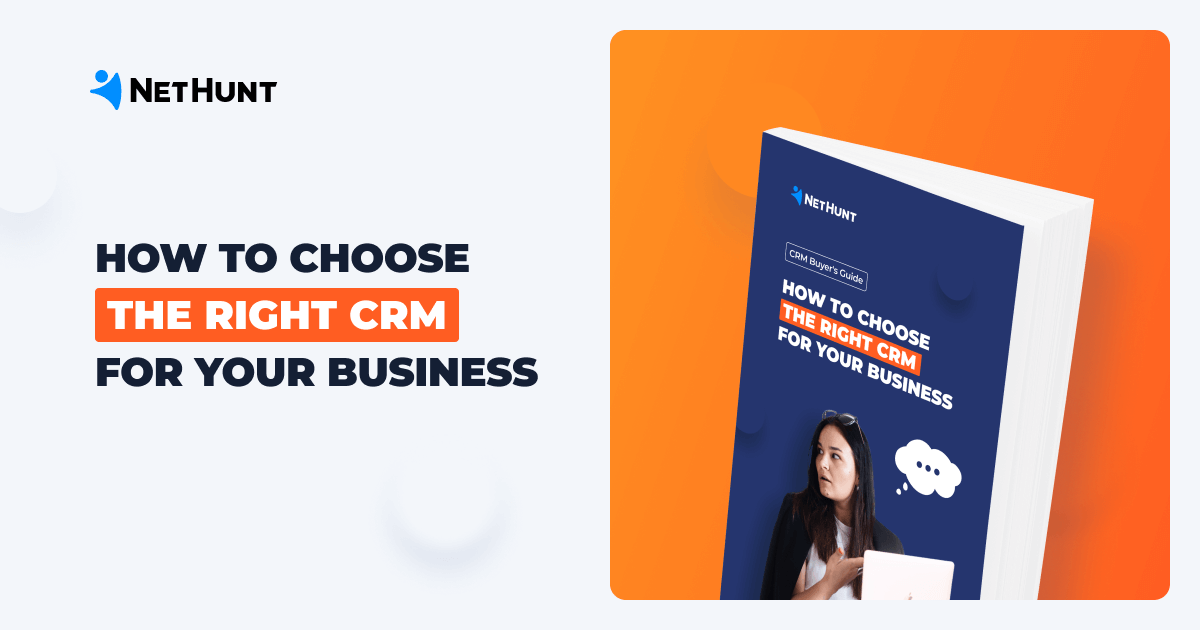
When do businesses need to choose another CRM?
Sometimes, a CRM you chose to implement a few years ago stops serving you right. This could be for a variety of reasons, but here are the most common:
- The current CRM system is unable to handle increased data or users as the company grows.
- The current CRM fails to integrate smoothly with other essential tools from your stack.
- The system is too complex, leading to poor adoption rates among team members.
- Customer support is slow or ineffective, impacting CRM usability and issue resolution.
- Rising costs or pricing structure changes make the current CRM economically unfeasible.
- Business needs have evolved, requiring features not available in the current system.
- Advances in technology present better solutions that offer enhanced functionality or value.
This could leave you wondering, “Which CRM is best for me?”, and send you right back to choosing the right CRM.
How to choose a CRM system
CRM is about to become a big part of your working life. It’s the first thing your teams log into every morning; it’s where all your customer and deals’ data is stored, where all your sales processes run out of; outreach, task management, all that jazz, and it’s where you’ll integrate your existing tech stack. CRM is really, really important for your business, so it’s best to know precisely what you want and what you need.
Here is our step-by-step guide on choosing the right CRM software for your business.
1. Define your goals
What’s the primary purpose of implementing a CRM system for your business? Ask yourself the following questions and you should gain a more precise answer of what you’re trying to do. With that information, you’ll be able to determine which kind of CRM you need, which CRM features you need, and how far a shiny, new CRM platform can take your business.
- Which industry do you operate in; is there a specific, niche CRM serving that industry?
- Are you a startup, an SME business, or an enterprise?
- Which channels do you engage in? Social media marketing, email marketing, or phone sales?
- Which tools in your tech stack do you need? Can they integrate with CRM?
- Which departments need to use your CRM platform?
- What's your budget for CRM implementation?
At this point, you should also decide which team members are likely to use a CRM system.
Identify your employees' goals for using а CRM. Do they need to improve overall performance or focus on specific problems? Ask them: What tasks would they like to automate? Are there any must-have features they'd like to see in the future CRM?
Remember that the main purpose of implementing a CRM system is to unite your teams, which means all kinds of employees are going to be involved in it.
2. Identify the features you need in CRM
But, but, but… which features do I need to choose from. Allow us.👇
Much-have CRM features for a sales team
Much-have CRM features for a marketing team
Much-have CRM features for a customer support team
Sales pipelines
Bulk email campaigns
Ticket generation
Customisable fields
Email templates
Customisation
Data import/export
Data import/export
Knowledge base
Team performance statistics
Marketing reporting statistics
Data reporting
Essential integrations: Slack, web forms, invoices, software for calls, social media, etc.
Essential integrations: web forms, software for calls, social media, etc.
Essential integrations: Slack, web forms, software for calls, social media, online chat, etc.
Mobile apps for Andrios and iOS
Team performance statistics
Mobile apps for Andrios and iOS
Workflows automation
Lead generation tools
Automated workflows
Notifications and reminders
Lead source tracking
Notifications and reminders
Invoicing
Customization
Task Management
API
Audience segmentation
API
Mail merge
Workflow Automation
The same but different - after thinking about features, you’ll want to start thinking about the integrations you need for your CRM system. Different platforms offer different levels of different integration for their system. For example, some Gmail CRM systems offer full Gmail integration while others only offer a sidebar layover for Google. Some LinkedIn CRMs help generate leads at the click of a button, while others only offer CRM context on a lead’s profile.
All good CRM providers have a section on their website outlining the tools with which their platform integrates. The best ones even tell you which integrations are coming.
Did you know? If you can’t find an integration with your favourite tool, you can always use Zapier. Zapier is an automation platform that can bring thousands of different applications into your working processes. Most CRM providers feature Zapier integration. While it’s not as seamless as a native CRM integration, it’s a good workaround for any business process.
A question: To Gmail CRM, or not to Gmail CRM?
Gmail CRM is a cloud-based software that helps manage your customer database, sales processes, and other workflows that affect relationships with leads and customers. It works right out of a regular Gmail inbox, integrating functionality with the world’s favourite email client. Full email integration is the future of CRM. Gmail CRM users can run their whole businesses out of Gmail. Beautiful.
3. Assess team readiness and training needs
Before implementing a new CRM system, it's essential to assess whether your team is ready to embrace this change. A smooth transition to a new CRM requires that your team is technologically adept and open to adapting their workflow. Consider the following to gauge your team's readiness and identify necessary training strategies:
- Current technology skill level: How familiar is your team with using advanced software tools?
- Training requirements: Will comprehensive training sessions be necessary to bring the team up to speed?
- Resistance to change: What are the potential challenges in getting team buy-in?
- Support and resources: What ongoing support will the team need to use the CRM effectively?
- Evaluating these factors will help you ensure that the CRM system you choose will be successfully integrated into your team’s daily operations.
4. Review compliance and data security requirements
Choosing a CRM also involves checking if the system meets your standards in compliance and data security. This is crucial for protecting sensitive information and adhering to legal standards.
5. It’s time to research (and remember customer support)
Take your list of answers to the questions, your list of CRM features, and your list of preferred integrations and start looking at suitable CRM platforms for your business. Рау extra attention to real user reviews. This allows you to avoid possible pitfalls that you might have missed while testing а CRM after just а week or two. You can find reviews over at G2 or Capterra - check them both out.
Please, please remember that your CRM platform choice doesn’t begin and end at the features it offers and its price per month. A provider’s ability to offer timely, actionable, and positive customer support is equally as, if not more important than the statements on their websites, or the length of their free trial. You need to feel completely comfortable talking to customer support representatives. Call them, use online chat, ask for a demo to make sure you are satisfied.
Easy for NetHunt CRM to say - our customers love us.
6. Take advantage of free trials
At this point, with your handy little lists of systems, features, and integrations, you should have stumbled upon one or two CRM systems that tickle your pickle. Most CRM systems worth their salt - the ones that believe in what they provide anyway - offer a free trial of their system. Typically, a free trial is around 14 days long, which is plenty of time to try out the features you require. Some providers offer a free version of their software, but functionality is always limited.
Get the most out of your free trial with these top tips…
✔️ Make sure you know what you’re testing. With a CRM system, you’re looking at functions, customisation potential, how to transfer your existing data into the system and add a new one, automation and workflow options, and reporting capabilities.
✔️ Schedule a demo with the sales team so they can show you how to get the most out of their system. If they’re good at their job, they’ll research you and your company before offering a personalised demo based on your specific needs. That’s what NetHunt does, anyway.
✔️ Get people involved. Don’t be afraid to ask that same support team for help. Likewise, get your team in on the CRM implementation process. Give them the system to test and collect their feedback at the end of it. Did it make their jobs any easier?
7. Choose a CRM
With proper planning, you’ll have identified a list of CRM systems that suit your business. Don’t get stuck in a perpetual cycle of research, free-trial testing, nitpicking, and repeating. Give your business a time limit for choosing a CRM and stick to it. Don’t get sidetracked by shiny, new features on other systems once you’ve chosen. If you need it, ask your new CRM-support team whether it’s possible to get those features yourself. They should try their best to implement it.
If you’re stuck for CRM options, take a look at our list to get the juices flowing. 👇
3 powerful CRM systems to choose from
We’ve selected the best of the best for this list. These three CRM systems will fit even the pickiest of businesses and make even the most stubborn manager smile.
NetHunt CRM
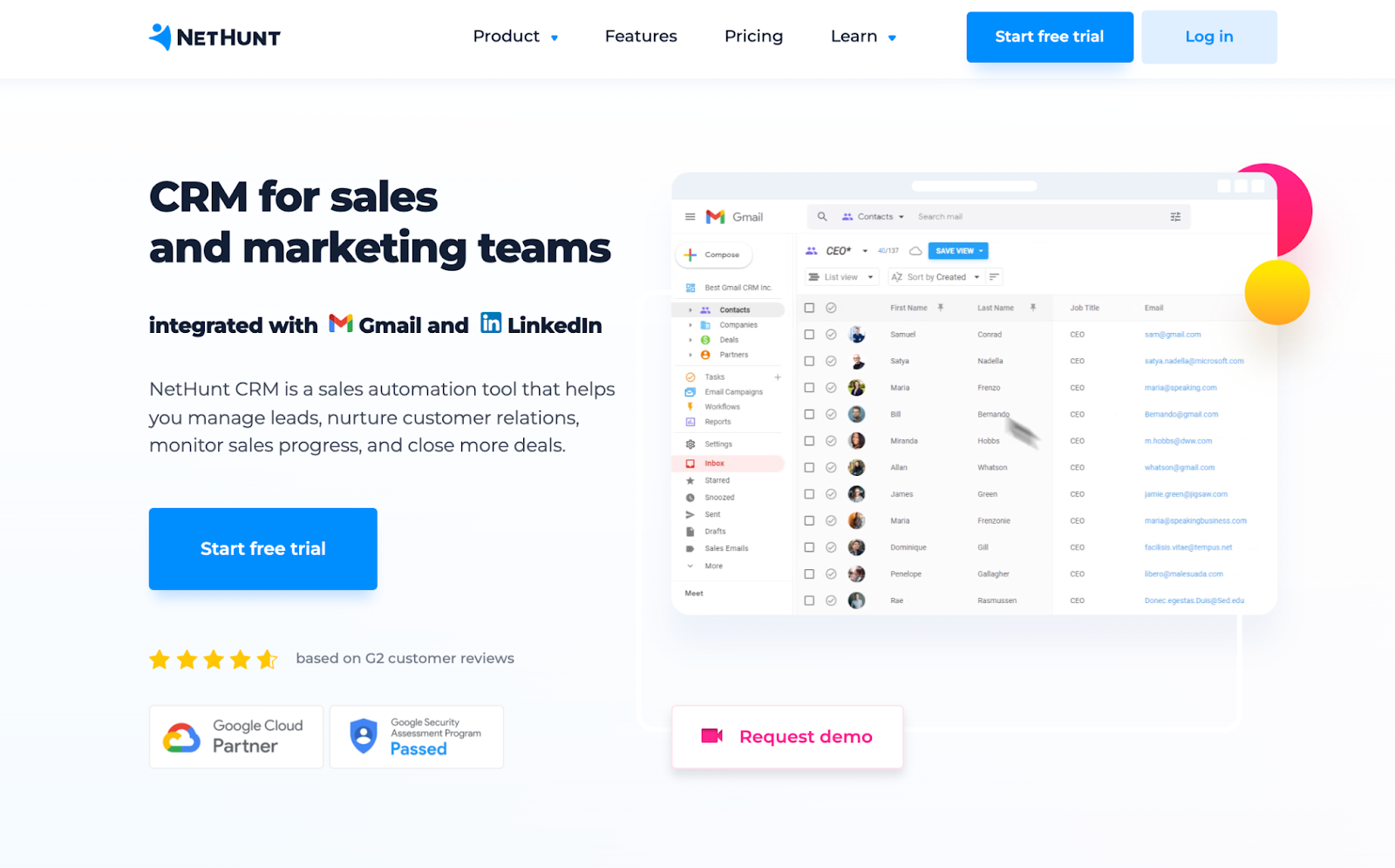
NetHunt CRM is Gmail-integrated software, helping users create new client records and deals from incoming and outgoing emails and featuring CRM for sales context next to everything in your inbox. The learning curve is smooth and shallow, but if you’re ever having trouble getting to grips with the system, NetHunt’s customer success team is lovely, ready, and waiting to show you the ropes.
- Contact management functionality to store and segment contacts
- Multiple sales pipeline management and visualisation
- Collaborative functionality such as tasks, mentions, and notifications
- Workflows by NetHunt CRM; sales automation
- Bulk emails, email tracking, custom SMTP, email templates, and reporting
- Direct integrations with Apollo, Facebook Messenger and Intercom for lead generation
- Zapier integration to connect NetHunt CRM with tools you love
- Automated lead capture, nurturing, and pipeline management
- Drip campaigns to nurture leads automatically
- Reporting functionality to create different types of reports
- Customizable Web Forms by NetHunt CRM
- Integration with Google services like Contacts, Data Studio, Calendar, Drive, and Chat
NetHunt CRM pricing
🆓All NetHunt users receive a 14-day free trial of the system.
🌱Early-stage startups can check if they’re eligible for the Early-Stage Startup Plan
💰Basic Plus: $34 per user per month, billed annually
💰Business: $48 per user per month, billed annually
💰Business Plus: $68 per user per month, billed annually
💰Advanced: $96 per user per month, billed annually
Interested? Then it’s time to stick NetHunt CRM on your CRM shopping list. Start your 14 day free trial today, download our Gmail integration extension, and book a demo with the Customer Success Team. They’re ready, waiting, and absolutely gorgeous.
HubSpot CRM
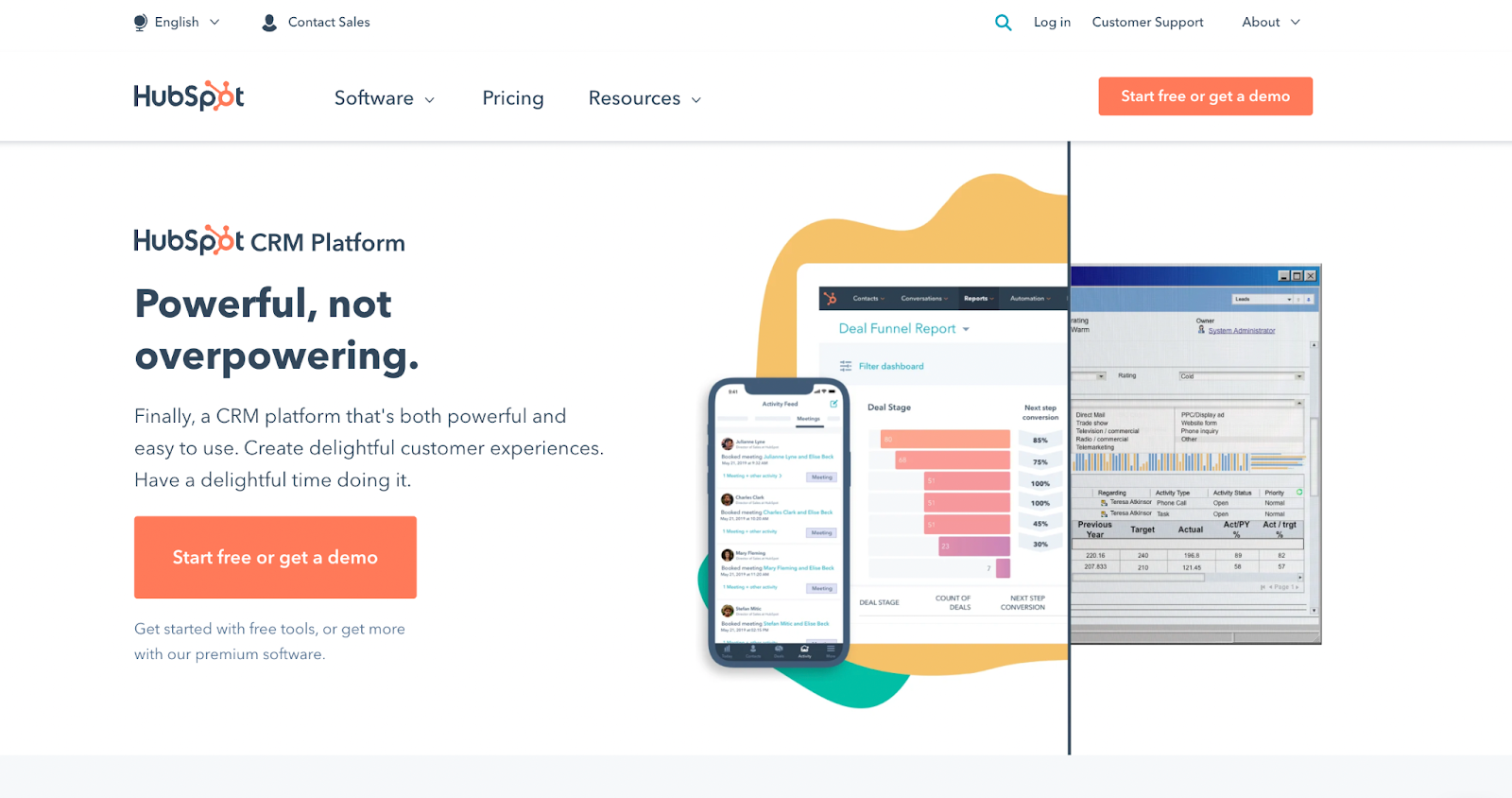
HubSpot are content marketing kings and a major CRM provider. Their main draw is that HubSpot CRM is forever free for unlimited users and up to one million contacts on a basic level. The HubSpot CRM free plan is built for smaller teams. As that team grows, they may want to pay for access to HubSpot's other features that offer further opportunities for growth.
We’ve got a sneaky overview that free HubSpot is designed to offer to Sales, Marketing, and Service Hubs.
- Reporting dashboard
- Automatic sales CRM notifications
- Predictive lead scoring
- Deal tracking
- Call logging app
- Pipeline management
- Prospect tracking
- Meeting scheduling
- Live chat
- Email tracking, templates, sequences, scheduling
- Document management and tracking
- Sales process and workflow automation
HubSpot CRM pricing
🆓 HubSpot is free forever for unlimited users and up to 1,000,000 contacts… until it’s not
💰 Marketing, Sales, and Service hubs are all $45 per month for two users, billed annually
Salesforce CRM
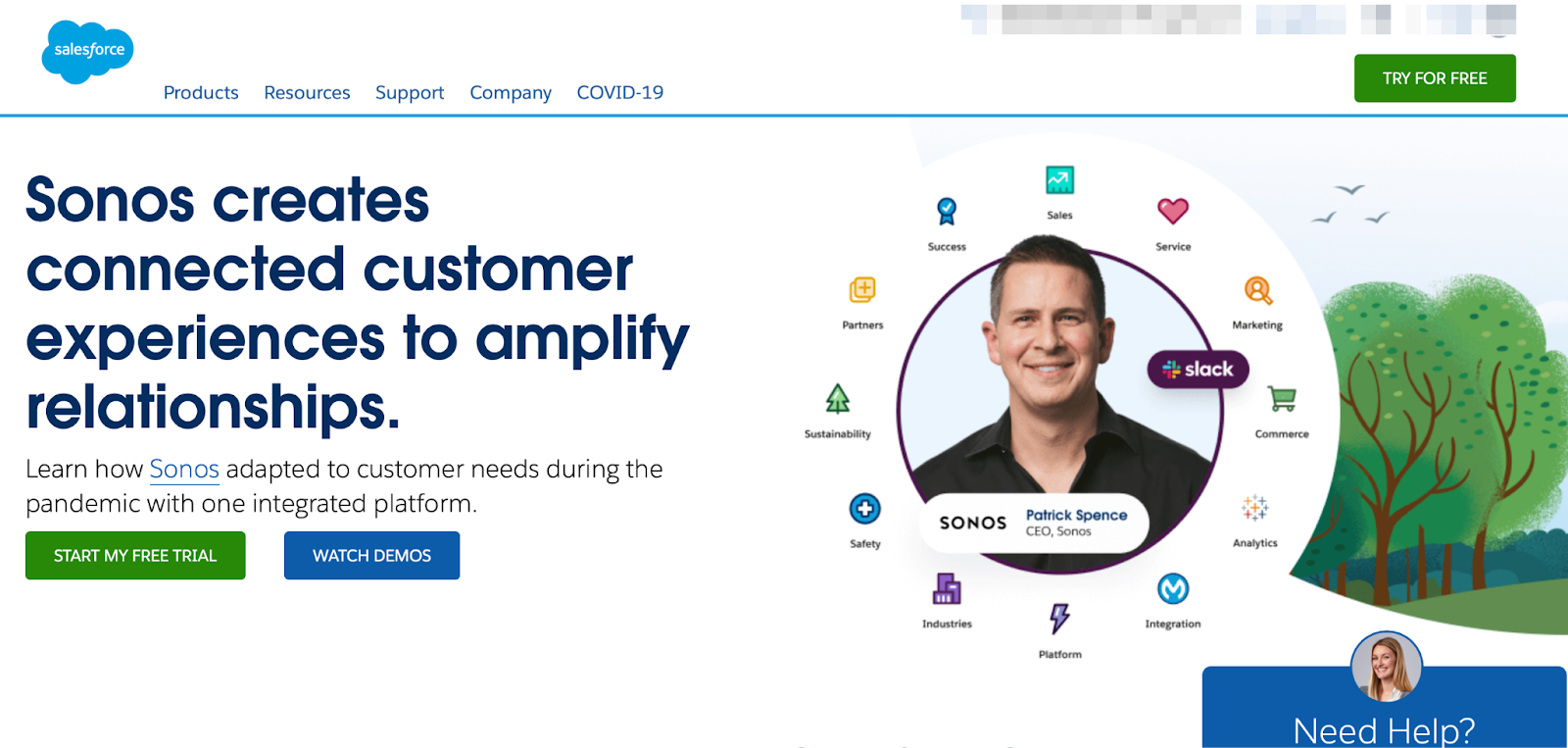
Salesforce CRM’s success is reflected in the dozens of awards it won from respected industry outlets such as CRM Magazine, ZDNet, and Destination CRM. This success is also reflected in the fact that Salesforce provides services for 99 out of 100 companies on the Fortune 100 list. Forgive me, but my SEO dashboard is telling me to say Salesforce CRM just one more time.
It’s a big CRM for big, big businesses.
- Seamless social media integration for customer context centralisation
- Reports and customisable dashboards
- Records as customisable list views
- Built-in quoting capabilities
- Validation rules to ensure data meets a certain criteria
- Realtime deal update notifications via the mobile app
- Automated deal approvals
- Data loads helps import, export, update, and delete Salesforce records
- File sync and share
- Flow by Salesforce workflow builder
- Supreme sales forecasting
- Picklists to maintain data consistency for multinational businesses
Salesforce Sales Cloud CRM pricing
🆓 Salesforce Sales Cloud features a free trial
💰Small Business (up to 10 users): $20 per user, per month billed annually
💰Complete (any size team): $60 per user, per month billed annually
💰Deeply Customisable: $120 per user, per month billed annually
💰Unlimited: $240 per user, per month billed annually
Check out our handy list of the best sales CRMs for 2022 if you want to continue your shopping journey. Alternatively, for all our Gmail-using brothers and sisters out there, we’ve put together a list of Gmail CRMs for 2025 to choose from.
What can we say?
We’re NetHunt CRM, we’re nice, and that’s just what we do.
Table of Contents
Crack the sales formula with CRM Lab
Twice a month, receive actionable CRM content to your inbox.


 Check pricing
Check pricing

